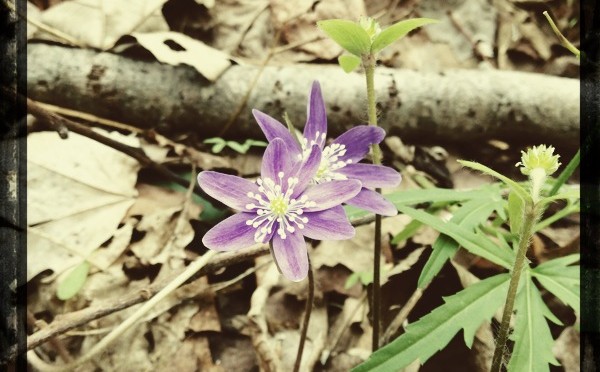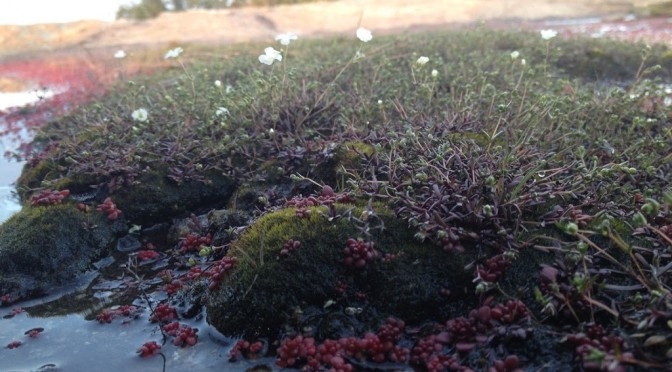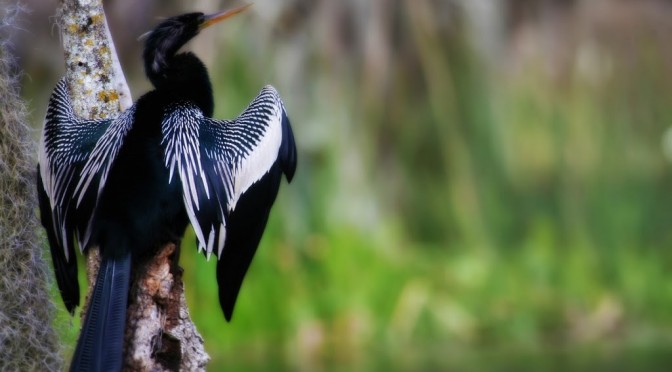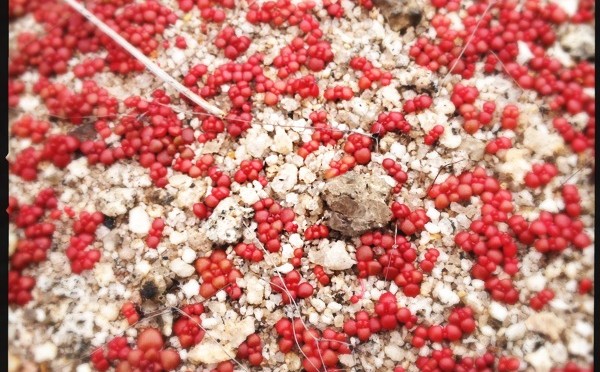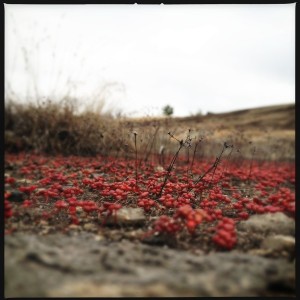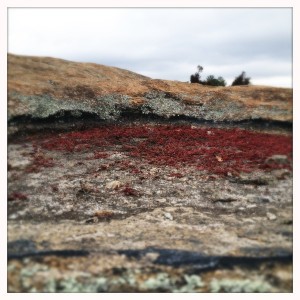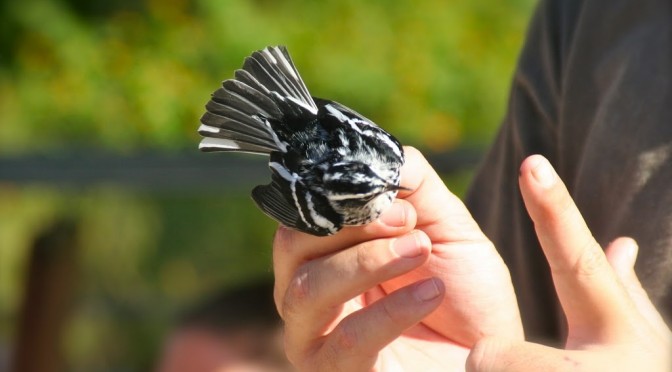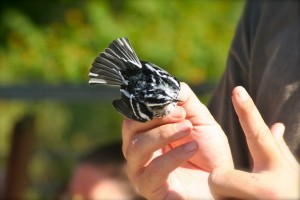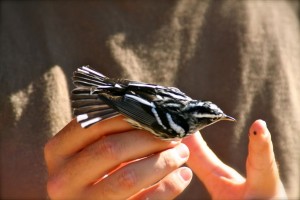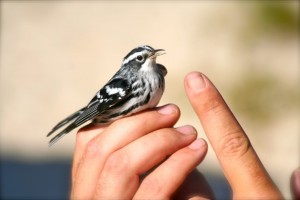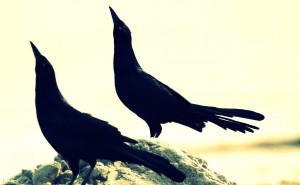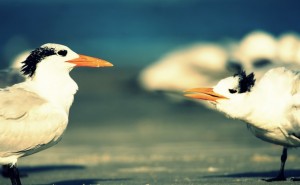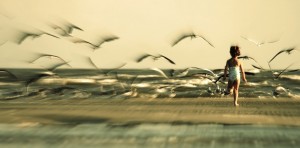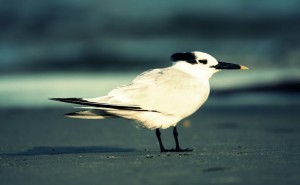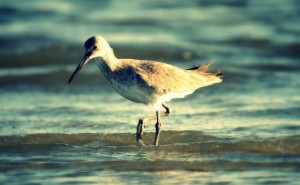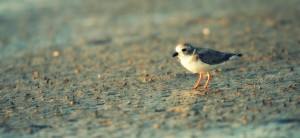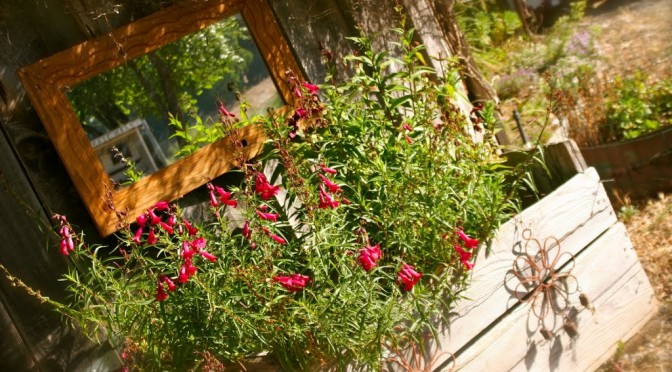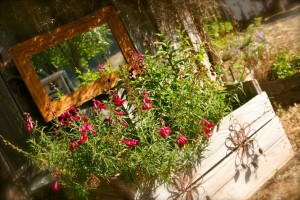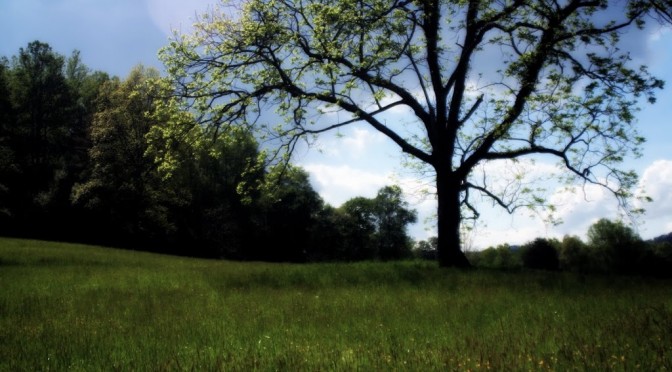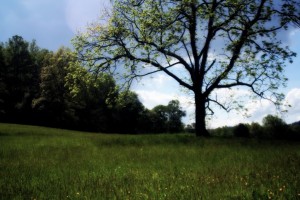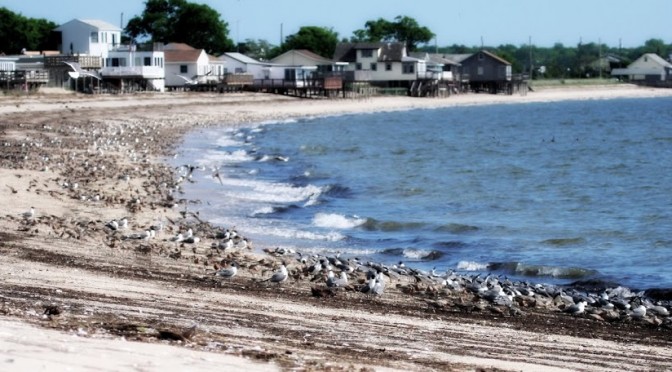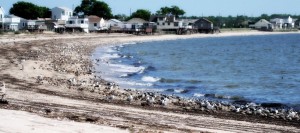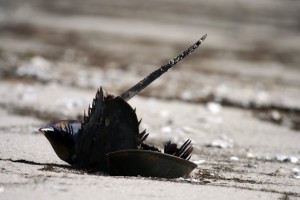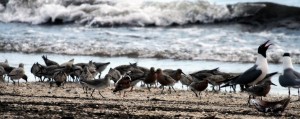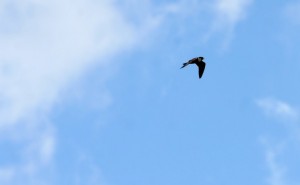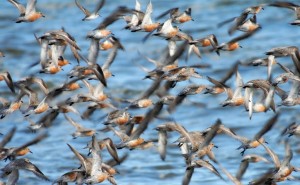Category Archives: Wanderings
Pieces of home
So Beth in NYC came for a visit this past weekend. She’d wanted a break from “the big city” and, so, came to Atlanta.
; )
This is closer to “city-living” than I’ve ever known, so her idea made me chuckle, just a little. I’d last about five minutes living in Manhattan. Anyway, I was happy to show her a couple favorite pieces of home…
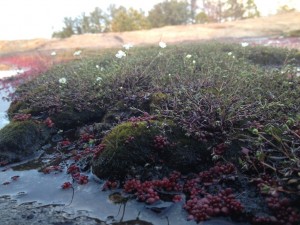 |
| We visited Arabia Mountain and checked in with the Elf Orpine… still not blooming! I haven’t decided what those little white flowers are, yet. Maybe Sandwort? |
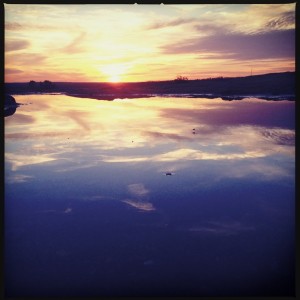 |
| We checked in with the sunset… gorgeous! |
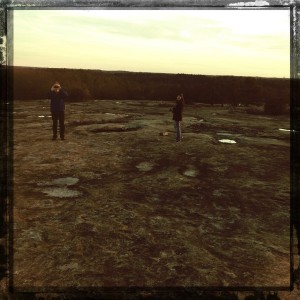 |
| We checked in with each other… we’re all doing okay! |
 |
| We wandered around Oakland Cemetery… (where Beth had an unfortunate run-in with fire ants!) |
 |
|
and I got to observe a real photographer at work!
; ) |
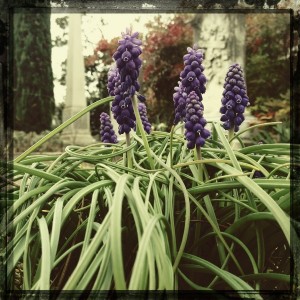 |
| I checked in with Spring… on its way! |
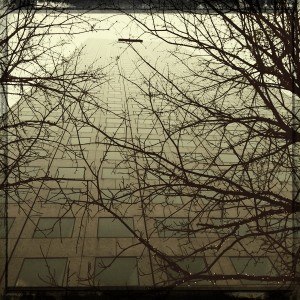 |
| We wandered downtown for rainy views of some very tall buildings…
(Beth, of course, was particularly bored by this part.) |
 |
| We took against-the-rules photos of a sand mandala at Emory… |
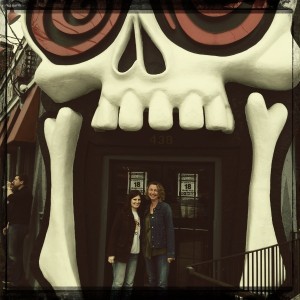 |
| And finished up at a favorite burger joint! |
The weekend went too fast, but I was so glad to see her friendly face here.
: )
Florida’s magic
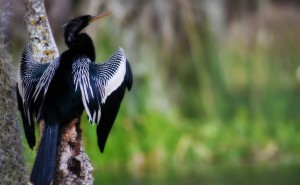 |
| The Anhinga, a silent bird who lives mainly in the silent places of the wildnerness… |
A weekend visit in late January to St. Marks and Wakulla Springs brought close looks at some of Florida’s most magical and strange birds. Most everything one sees in Florida feels exotic. It’s the setting, for sure… everything mist-laden and draped with Spanish moss…
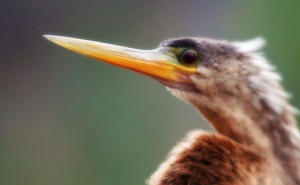 |
| Focus on the dagger-like bill, used to impale fish. Yikes! |
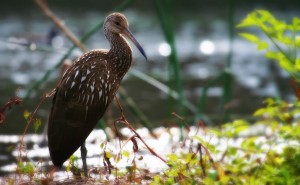 |
| An apple snail specialist… |
The boat ride at Wakulla Springs was a treat… close-up views of manatees and my first-ever January Osprey. The Limpkin (above) was the best find, though… a cool looking bird that I’d heard described as a very large Rail with the habits of an Ibis. I mistook a juvenile White Ibis for a Limpkin the last time I was in Florida… so I need to get to know both species better.
There’s a visit to South Florida planned for late next month, which will require learning a couple new wading birds… I can’t wait!
Stones
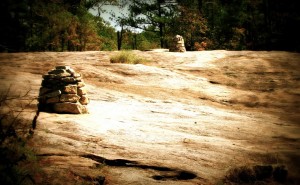 |
| Stone cairns that mark the trail up Arabia Mountain |
I have piled stones
on top of one another
for years now
stones of habit
stones of comfort
stones of refuge
stones to settle my heart
stones to mark the days of my journey…
It’s not uncommon to find stone cairns used as trail markers. These piles of stone help us find our way. They lead us somewhere and provide a tangible space to pause and recall. They offer a moment to get our bearings and seek direction. They hint for us to stop and listen for the whispering wind.
We may stand at a cairn and remember. We might dream or hope. Maybe we turn within to figure out the meaning behind this pile of stones. What does this place mean? What are its secrets? What are we meant to find here?
Elf orpine
I know you’re thinking, “Oh my God! What IS that? It’s red!”
If so, you may be a plant geek like me.
; )
I had the very same reaction when I saw photos of it in my copy of Favorite Wildflower Walks in Georgia after it was gifted to me on my very first weekend here. I couldn’t wait to see this unique little plant in person.
Elf Orpine or Small’s Stonecrop (Diamorpha smallii) is a succulent that grows on granite outcrops in the Southeastern US.
We first went looking for it back in late September… it’s a winter annual, so it was still dormant on that first try. The cool and moist weather of the Georgia “winter” allow it to germinate when conditions are most favorable for the seeds to survive.
The plants are getting ready, now, to shoot up and flower in the early Spring.
(I’m not too sure, yet, when Spring hits here, but I’m guessing they’ll flower in mid-March.)
I can only imagine how hot the rock on Arabia Mountain must get in summertime. It makes sense for these plants to sprout, grow, flower and set seed before the summer furnace comes on, I’d guess.
Elf Orpine grows here in shallow depressions in the granite, in very little soil. It’s part of a small community of specially adapted plants that grow in the hollows, in something like dish gardens on the rock surface. Fascinating and pretty spectacular to see when blooming, I bet.
Stay tuned.
Up close with a Black and White
I spent a couple hours one morning last week at the Jekyll Island Banding Station; it’s Georgia’s oldest continually operated station. There’s always a nice variety of birds and the folks who run the station, for a couple weeks each fall, are happy for visitors.
This particular warbler, a Black and White, was quite feisty!
And handsome, of course…
Note the “target” penned on the bander’s finger… he says it gives the birds somewhere to aim their bites!
; )
Where the sea lends large
St. Simons Island is one of the coolest places to spend the low tide hours… the sea retreats almost a half mile and leaves in its place endless tidepools and sandbars for exploring…
When I’m finished looking for seashells, there’s always birds to entertain me…
like these Boat-tailed Grackles playing King of the (sand)Castle
: )
(I forget how noisy they are when I’m away from the coast for too long!)
Royal Terns are grown, but still begging from their parents.
(endlessly entertaining!)
A walk among the birds at low tide teaches me to measure happiness by nothing I can hold… nothing I can catch.
; )
I sneak close on my belly, camera in hand, for a better look at the spot of mustard on a Sandwich Tern’s bill…
and squat low over the water with a Willet.
The beach is stretched out as far as it can go as I pause to consider a young Piping Plover feeding at the far end of a tidepool…
Can my imagination make this bird a familiar?
(Could be… though its banded companion was hatched in the Great Lakes area this past summer.)
I keep walking and exploring the quiet changes the outgoing tide has left; entire oceans are moved one inch at a time…
Olema
We’re off to the coast for a couple days; mostly for the required beach fix…
I wonder if this can work out to be a monthly thing, maybe?
: )
I’m sharing a pic from where we stayed on the outskirts of Point Reyes National Seashore last month… a quirky sort of place with hummingbirds and chickens and even a view of horses out the bedroom window…
: )
I’ll be back with more from California.
Trying to be loved
A spectacle, subdued
Reed’s Beach is a tiny bayshore community located about 10 miles north of Cape May. It and other similarly sleepy and bug-infested places along the shores of Delaware Bay find themselves, for a couple weeks each year in late May/early June, at the convergence of diverse and, often, conflicting interests.
Firstly, there is the time-honored claim made by the horseshoe crab. The spring tides attract them to the calm bay shores to spawn and lay their eggs, by the billions.
Drawn specifically to the horseshoe crabs themselves, rather than their eggs, are commercial fishermen. Their value to the biomedical industry and as bait for eel and conch has led to a severe decline in the horseshoe crab population recently.
Next there are the birds that are lured to the bonanza of food presented by the spawning horseshoe crabs… all the seaside regulars show up to eat… gulls, grackles, shorebirds, crows… the beach is a living (and loud!) mosaic of birdlife.
Add the occasional predator to the scene, in this case a Peregrine, and you have the perfect recipe for a birder orgy. Birders love to see such drama and spectacle.
Our claim to this extravaganza, as birders, is a relatively recent one. Crabs and shorebirds were converging here on the Delaware Bay for any number of years without anyone really being aware of it. No sooner had the birding community come to know of it, than it almost disappeared.
Almost!
The star species in this spectacle of birds and crabs is the Red Knot. A robin-sized shorebird that undertakes a world-class migration and stops, midpoint, at Delaware Bay to refuel on its journey to the Arctic to breed.
Scientists and the birding community have watched their numbers plummet year after year. This year, on the lucky day we were there to witness it, some 5,000 had just arrived from Tierra del Fuego. 5,000 sounds like an impressive number until you understand that you’re looking at approx. half the Eastern population of a species.
Half of all the Red Knots in my world were spread there on the beach in front of us and still the shoreline looked mostly empty. A Peregrine appeared on the horizon and cut through the panicked flock, reducing it by one, perhaps. One less than half the population landed again, only to be panicked from their feeding, yet again, by a photographer or a fisherman intent on the jetty.
We all stake our claims…
One of the finest and most informative videos I’ve yet found is available at this link from PBS.
